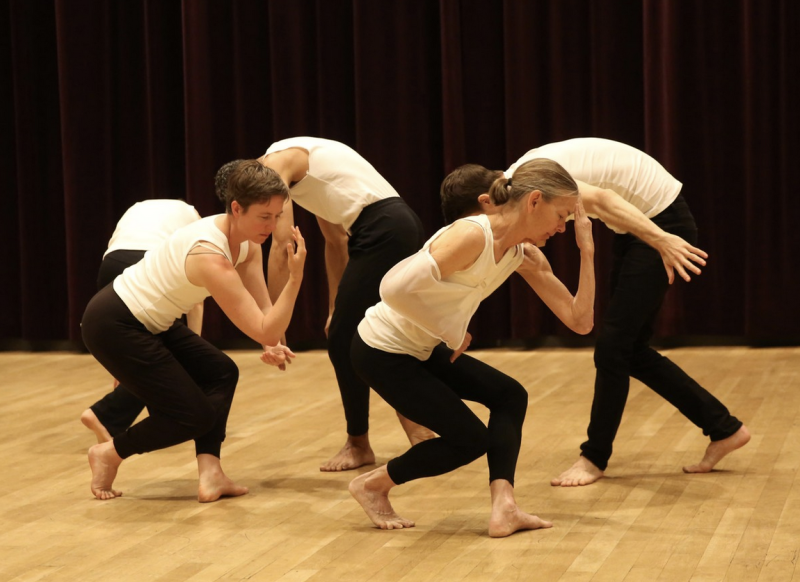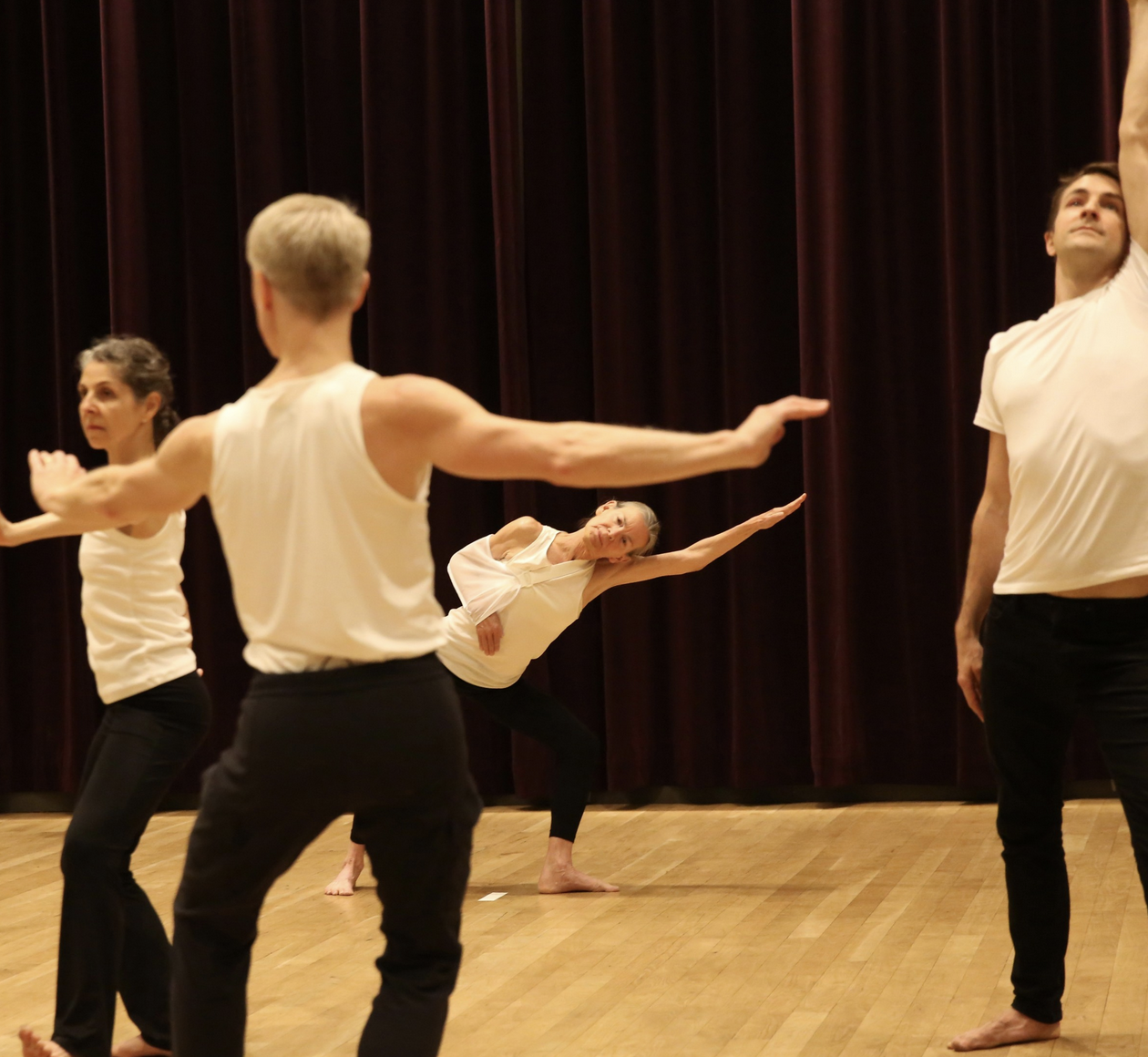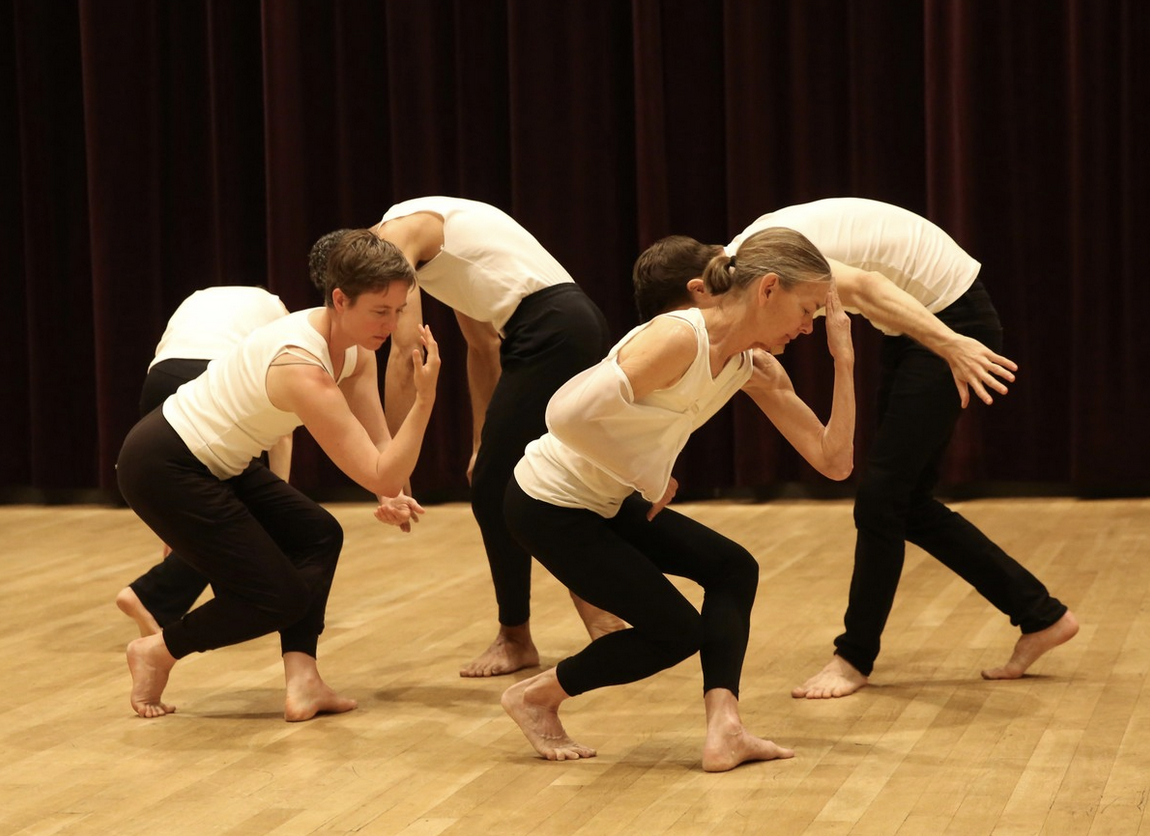Molissa Fenley and Tess Michaelson
Gagosian Quarterly
May 28, 2025
 Photo © Julie Lemberger |
In 1990, postmodern dance pioneer Molissa Fenley performed Bardo at Keith Haring’s funeral. She created the piece as an homage to the artist and the creative friendship that he and Fenley had developed since they first met in Haring’s hometown of Kutztown, Pennsylvania. According to Tibetan tradition, “bardo” is a liminal space between death and rebirth where, unconnected from physical forms, one’s consciousness faces one’s karmic past and prepares for the next life. In honor of the thirty-fifth anniversary of Haring’s funeral and with the support of the New York City AIDS Memorial, Fenley restaged the work with an ensemble cast on May 4, 2025, at the LGBT Community Center. Here, Fenley speaks with Tess Michaelson about the passage of time, the truthfulness of performance, and the expansion of empathic experience.
Tess Michaelson: Last time we talked, you spoke about your arm being like a broken wing. I was wondering if you could speak to your choice to continue dancing in this work after breaking your arm and how that decision relates to the ethos of Bardo as a whole.
Molissa Fenley: Well I broke my arm on Wednesday and the performance was on Sunday. I felt that it was important to dance because Bardo is about being truthful and that’s where my body was. I decided to go ahead and be very up front about that fact: “OK, I’ve hurt myself and I’m still going to dance.” I think it sets a precedent for performing not as an ideal state so much as a truthful state. It’s the state of the human being at that moment in time. And it’s also the state of the person watching at that moment. We’re in this space together and we’re experiencing this phenomenon of slow movement. There are moments of sudden shifts that I call blinks; it’s as if you blinked and when you opened your eyes, you’d wonder “What was that?”
TM: That meditative quality took me to a different register, a deeper kind of vibrational shifting. I’m wondering how you think about the way that, however slowly, with the exception of those blinks, Bardo is a kind of passage. That is, dancers aren’t dancing around, they’re going from one place to another.
MF: The first rendition has three couples together, then, the second time around, everyone is on their own individual path. The path of Bardo in its original state starts upstage right and travels to downstage left. It never returns to its beginning point. With the six individuals, each person could have the idea of starting in one place and ending in the opposite place. So, there was always this weaving going on as people continued in their progression. The rhythm of the movement becomes both physical and mental, because you’re dealing with the reality of the other dancers. They come to populate the space, and so we populate the space for each other, traversing, in our own time, the four diagonals that represent freedom from attachment, pride, aversion, and envy. It made for a wider experience because what you’re doing is then multiplied and augmented by what they’re doing. There’s a chemistry in the way each dancer is on their own and in the midst of others. And, because this group has danced together quite a bit, there’s a camaraderie, an understanding, a knowledge.

Bardo (1990), choreographed by Molissa Fenley; performed at the LGBT Community Center, New York, 2025. Photo: Julie Lemberger
TM: Do you remember what that metaphysical journey was when you performed it for the first time? How does this one feel in your body compared to the first?
MF: Bardo asks for close attention, which I think immediately elicits intimacy because you’re watching another individual and, in a way, you become that individual. There’s an empathic merging from one person to another. At Keith’s memorial thirty-five years ago at the Cathedral of St. John the Divine, the audience was there with a consciousness of celebrating someone’s life and celebrating their own lives, celebrating that art is made and that we are going to go on, and bereaving that Keith is gone and that AIDS has taken so many lives. And yet it’s optimistic because it has to be. I mean, we’re alive and we’re watching it; we’re alive and we’re doing it. I think that that came over at the cathedral thirty-five years ago and again at the New York City AIDS Memorial this past week.
In terms of me doing it, I’m thirty-five years older, and so, there’s a depth. I like the vivacity and the virtuosic possibilities of young dancers, but I really like older dancers. My dance company is intergenerational: I’m seventy and I’m the eldest, then the youngest is thirty-nine, which isn’t eighteen. There’s a maturation. Each dancer I’m working with now has done countless pliés, countless relevés. The physical dance forms have been experienced myriad times within each of those bodies. I think Bardo invites intimacy, allowing someone watching to enter into that world because they see that that person could be them.
TM: The way that Bardo deals with attention and the tension of attention across multiple bodies feels really powerful. It reminds me of something you wrote about between spaces.

Bardo (1990), choreographed by Molissa Fenley; performed at the LGBT Community Center, New York, 2025. Photo: Julie Lemberger
MF: I think the idea of the in-between space has to do with the mental space of the dancing. The piece begins and as you continue doing it in the timeframe that each moment asks for, you become more and more attuned, more in it, and yet out of it at the same time. The mind is such a big place. You’re watching, you’re experiencing everything, you’re keeping on top of it. And yet, there’s a part of your brain that is digesting, a part that’s breathing, and another part that’s thinking, “Hmm, what are we going to do later?” You don’t know where these little fleeting ideas come from and when you’re in the middle of doing something like Bardo, those fleeting moments can enter at any time. It depends whether you listen to them or not. Again, it equalizes everyone: everyone is seen, everyone is in the light—there aren’t any shadows.
TM: I’m wondering, too, about the iterative quality of the dance. Along with its slowness, I was struck by your choice to do it twice in a row. Bardo is being restaged for the second time and then within that, you’re doing two versions. What was your thinking around that decision?
MF: It’s like reading a book for a second time or looking at a painting many times over the years: Now that you know what it is, you’re able to find something else in it and learn more about yourself because of the way you’re responding to it. The idea of bardo is it’s in-between one existence and the next. It’s a place where you’re neither here nor there—you’re in-between realizations. In the dance, you never go back on yourself, spatially or mentally. The movement is from one place to another, in-between those two things but always getting closer to the ending and farther away from the beginning. So, there’s an accruement of where you’ve been. To me, looking back is a very emotional experience, because the space takes on the animation of what has happened within it, but it also takes on its own form. When you look at space as an entity, it’s a nothingness, and yet it’s an everything. It contains all these things that have happened within it and yet there is no residual. Nothing is retained there. It’s only there as a memory.
Bardo was performed by dancers Christiana Axelsen, Betsy Cooper, Justin Lynch, Michael Trusnovec, and Timothy Ward with music by Somei Satoh.
https://gagosian.com/quarterly/2025/05/28/interview-molissa-fenley-and-tess-michaelson/
Two Pianos by Phoebe Legere filmed at Yaddo, Saratoga Springs, New York
August 15-December 31, 2025
Click here for details
Salone at Judson Memorial Church
March 17, 2026
Click here for details
Double Beginning



